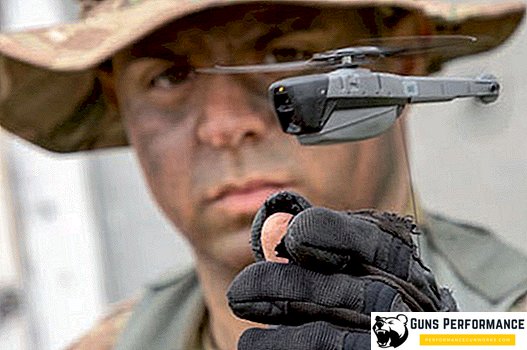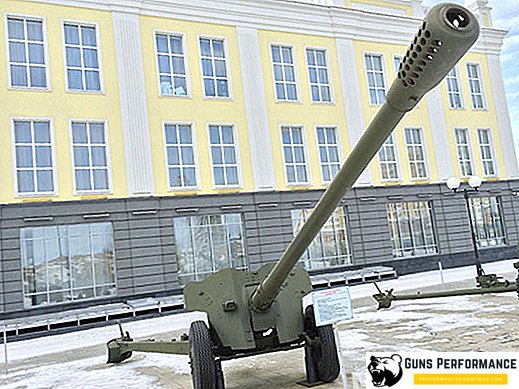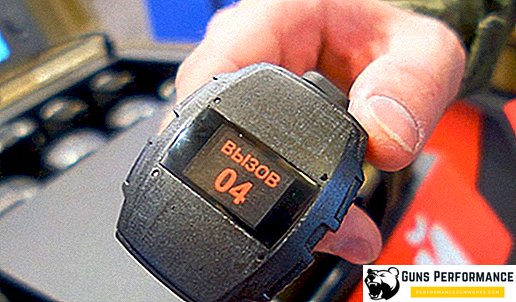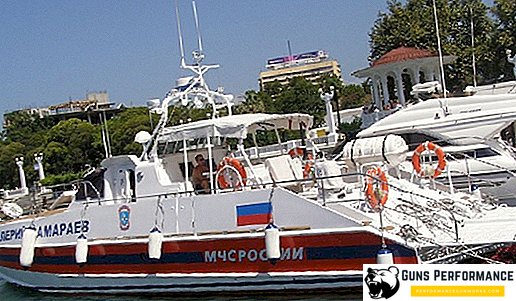The USSR can be safely called the country that had the greatest influence on the emergence and development of this class of armored vehicles, like infantry fighting vehicles. It was in the USSR that the BMP-1 was created - the first car of this type.

In 1990, the general public was presented with a new machine, the BMP-3, in the development of which a number of very interesting design solutions were used. This armored vehicle can be called a model of the next generation.
History of creation
They began to develop the car in 1977 in the KB Kurgan Machine-Building Plant. When creating the machine, the operating experience of the BMP-1 and BMP-2 was used. The designers wanted to build a brand new car. By that time, the USSR had serious experience in the development and use of light tracked vehicles, it was actively used when working on the BMP-3.
In the mid-1970s, work was carried out in the Soviet Union to create a light tank for the Airborne Forces. This tank had to have a small weight and size, so that it can be landed from the plane. At this very time, work was underway to create a light reconnaissance tank for the Ground Forces. Both of these projects ended in failure. But there remained a huge technical and engineering background, which they decided to use to create the next generation infantry fighting vehicle.
You can also add that in the development of design BMP-3 made more than a hundred inventions, which were later patented.
When developing a new car, the designers had two primary tasks: to strengthen the security of the car and increase its firepower. In principle, they are fully consistent with world trends that have existed for several decades. During this time, the weight of the BMP (and armor protection) increased significantly, and the caliber of the weapon used on the BMP became larger.
Initially, they planned to install a 30-mm cannon, a machine gun coupled to it and an automatic Flame grenade launcher. However, the military did not accept this option, as it did not give the car a significant increase in firepower. The main armament of the BMP-3 was decided to make a 100-mm cannon, from which it was possible to launch guided anti-tank missiles.
The designers understood that if the body of the new BMP was manufactured from armored steel, it would be too heavy and the future machine would not be able to float, and it would be impossible to parachute from the plane. Therefore, it was decided to use for the manufacture of the body of the BMP-3 special aluminum armor.
In its combat power and security, the BMP-3 is not inferior to some tanks of the 60s of the last century.
The BMP-3 received a new undercarriage, a new engine, a new weapon system and significantly increased security. The car has a somewhat unusual layout scheme: the engine and power plant is located in the rear part of the machine, which is more typical for tanks. Usually, the BMP engine is installed in front of the car.
Such a layout of the car caused very serious controversies during its development. It has some advantages: it improves visibility from the driver’s seat, this arrangement creates more amenities for the crew and the assault, the weight is more evenly distributed along the length of the vehicle. However, there are also negative aspects: the engine, which is located in the front, is an additional protection of the crew, in addition, it allows infantrymen to parachute out of the car from behind - in the safest place in the battle.
Tests of the car, which were carried out in 1986, gave conflicting results. The new location of the paratroopers in the car was recognized as not very convenient, aluminum armor was used in the body of the car, and army workshops do not know how to handle this metal, which is difficult to weld. Indeed, the armament of the machine showed its power, but because of the strong recoil of the gun, cracks began to appear on the hull. During the tests, the BMP-3 showed a lot of minor flaws and "childhood diseases", the developers had to deal with.
The BMP-3 was first used hydromechanical transmission, which seriously simplified the control of the machine.
To date, produced more than 1,500 cars. There are several modifications of the BMP-3, and several special machines have been produced at its base.
Even after twenty years, controversy continues over the layout of the new machine, its weapons and the combat use of the machine. In essence, a car was created with a clear focus on firepower at the expense of crew comfort and security. The BMP-3 costs almost twice as much as the BMP-2, and its maintenance is very expensive and complicated. Some technical solutions that were used in the BMP-3 can be called revolutionary, but does this machine have a future like a single combat complex and can it come to replace the BMP-2.
Machine description
The turret and body of the car are made of sheets of specially treated aluminum ABT-102. Armor BMP-3 withstands 12.7-mm bullets, as well as fragments of artillery ammunition. Frontal armor can withstand hitting 30mm ammunition. Although, it remains unclear whether the frontal projection of the machine can withstand the hit of modern sub-caliber shells. Strengthening the frontal armor of the machine is due to the additional screens made of steel armor.
Like the previous cars, the BMP-3 has four divisions: combat, control, amphibious, and power compartment. However, their location is somewhat different from the usual, adopted on other BMP. Infantry fighting vehicle BMP-3 has a power compartment, which is installed in the rear part of the machine. The control compartment is located in the nose, and in addition to the driver’s seat, there are two more paratroopers sitting here who can fire right in the direction of movement from two PKT machine guns. Each seat (paratroopers and drivers) in the control compartment is equipped with its own hatch.
In the fighting compartment, which is located in the center of the vehicle, there are equipped places for the gunner operator and the commander of the vehicle. The turret contains the weapons systems of the machine, the loading mechanism of the gun, observation devices, sighting devices and communications equipment.
Behind the fighting compartment is located the landing bay. It provides seven places for paratroopers. In the department there are loopholes, surveillance devices and even a toilet.
In the stern of the BMP-3 is the power compartment. Here is the engine, transmission elements, cooling system, batteries, containers with oil, various sensors. The engine BMP-3 has high performance, which provides the car with good maneuverability and mobility.
The BMP-3 is equipped with jet propulsion units, which provide the vehicle with movement through the water. They are under the bottom of the armored vehicle.
Armament BMP-3 consists of 100-mm gun 2A70, from which you can launch guided missiles. In the same block with this gun there is a 30-mm cannon and a PKT machine gun. Installed on the machine set of guided weapons "Bastion", the fire control system, several sights (including night) and weapon stabilizer.
With the help of 100 mm guns, the BMP-3 can destroy armored vehicles and enemy manpower using guided and unguided ammunition, in addition, the machine can fire at low-flying air targets. The BMP-3 has a semi-automatic loading mechanism. 30-mm cannon 2A72 can be used to destroy enemy light armored vehicles, their manpower and fire at low-flying aerial targets. The muzzle 2A72 attached to the trunk 2A70. This gives the gun a higher accuracy of fire.
Specifications
Below are the technical characteristics of the infantry fighting vehicle BMP-3.
| Combat weight, t | 18,7 |
| Crew + landing party | 3+7 |
| Sizes, mm | |
| Length | 7200/7140 |
| Width | 3230 |
| Height | 2300-2450 |
| Clearance | 450 |
| Armament | |
| Gun, brand / caliber, mm | 2A70 / 100 mm |
| Automatic gun, brand / caliber, mm | 2A72 / 30 mm |
| Machine guns, make / number x caliber, mm | PKT / 2-3x7,62 |
| ATGM | 9M117 |
| Stabilizer | 2E52-2 |
| Ammunition, pcs. | |
| 100 mm shots | 40 |
| 30mm shots | 750 |
| 7.62 mm cartridges | 6000 |
| ATGM | 6 |
| Engine | |
| Mark | UTD-29 |
| Type of | diesel |
| Maximum power, l. with. | 450-500 |
| Maximum speed, km / h | |
| On the highway | 70-72 |
| Afloat | 10 |
| Power reserve, km | 600 |
| Ground pressure | 0,6 |
| Obstacles, m | |
| Moat | 2,5 |
| Vertical wall | 0,7 |
| Ford | swims |
| Rise | 30 |
| Roll | 25 |












